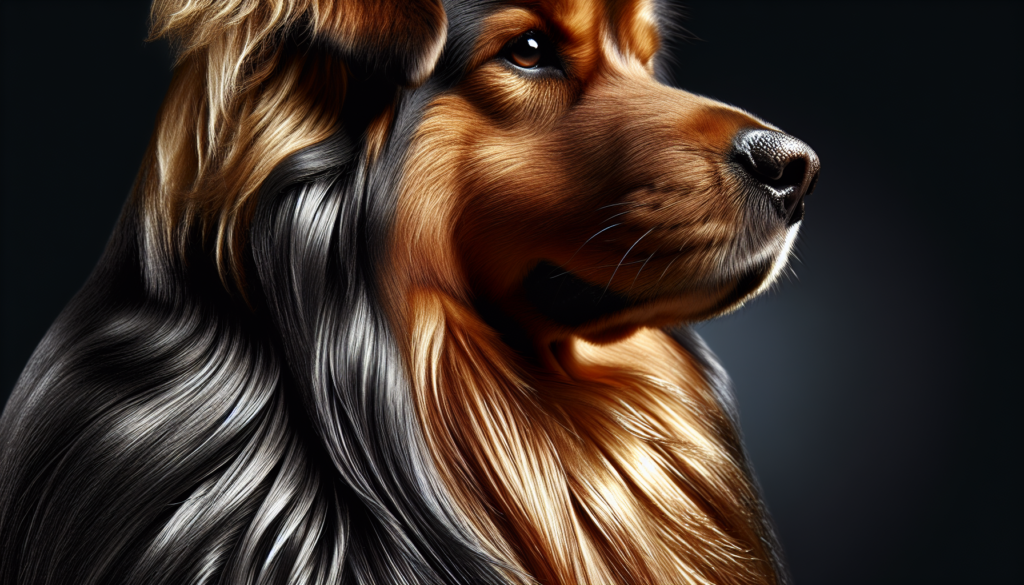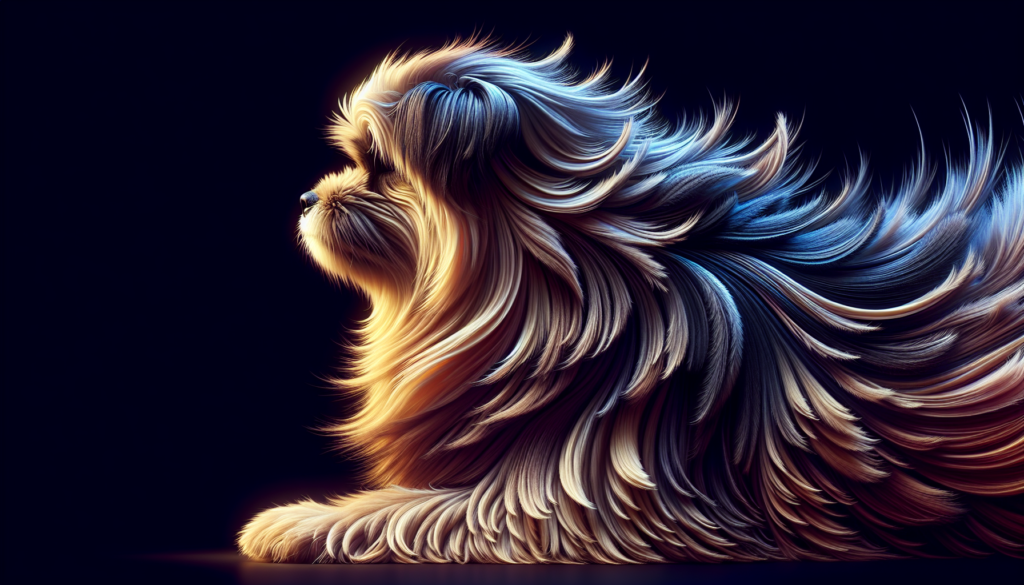If you’ve ever wondered why some dogs are so fluffy while others have short, sleek coats, then this article is for you. In this comprehensive guide, you’ll find everything you need to know about different dog coat types and how to care for them. From understanding the various coat textures and lengths to learning the best grooming techniques for each type, you’ll become an expert in no time. Whether you have a long-haired Saint Bernard or a short-haired Dalmatian, this guide will help you keep your furry friend’s coat healthy and beautiful. Get ready to discover the secrets behind every dog’s fabulous coat!
Understanding the Different Dog Coat Types
Dogs come in a wide variety of coat types, each uniquely suited to their breed. As a dog owner, it’s important to understand the characteristics of different coat types and how to properly care for them. In this guide, we will explore the various dog coat types and provide tips on how to keep your furry friend’s coat healthy and beautiful.
Single Coat
A single coat, also known as a “smooth coat,” refers to dogs that have only one layer of fur. These breeds typically have short, sleek hair that lies close to the body. Some examples of single-coated breeds include Boxers, Doberman Pinschers, and Greyhounds.
Care Tips:
- Regular brushing is essential for single-coated breeds to remove loose hair and prevent matting.
- Bathing should be done as needed, using a gentle dog shampoo to avoid stripping the natural oils from their skin.
- Protecting their coat from sunburn and extreme temperatures is crucial, as they lack the insulation provided by a double coat.
- Pay attention to their skin health and consult a veterinarian if you notice any abnormalities or irritations.
Double Coat
Dogs with a double coat have two layers of fur, consisting of a soft undercoat and a longer, coarser outer coat. This type of coat provides excellent insulation and protection from the elements. Breeds such as the Golden Retriever, Siberian Husky, and German Shepherd are known for their luxurious double coats.
Care Tips:
- Regular brushing is essential for double-coated breeds, especially during shedding seasons. This helps remove loose fur and prevents matting.
- Bathing should be done sparingly, as excessive bathing can strip the natural oils from their coat and cause dryness.
- When drying a double-coated dog, make sure to thoroughly remove any moisture from their undercoat to avoid skin irritation.
- Pay special attention to their undercoat during shedding seasons to prevent the formation of mats and tangles.
- Professional grooming can be beneficial for these breeds, as groomers are experienced in handling the specific needs of their double coats.
Hairless Coat
Some dog breeds are naturally hairless or have minimal hair on their bodies. These unique breeds include the Chinese Crested, Xoloitzcuintli (Mexican Hairless), and Peruvian Inca Orchid.
Care Tips:
- Despite their lack of fur, hairless dogs still require regular skincare. Moisturizing lotions or oils can help prevent dryness and irritation.
- Sun protection is crucial for hairless breeds, as their skin is more susceptible to sun damage.
- Regular bathing is necessary to remove dirt and oils from their skin. Using mild, hypoallergenic shampoos is recommended.
- Keep in mind that hairless dogs may be more prone to temperature changes, so providing suitable clothing or shelter in extreme weather conditions is important.
Curly Coat
Breeds with curly coats have tightly curled or wavy hair that often requires special attention. Poodles, Bichon Frises, and Irish Water Spaniels are examples of breeds with curly coats.
Care Tips:
- Regular and thorough brushing is essential to prevent matting and tangles in curly-haired breeds. Using a comb or slicker brush can help keep their locks in good condition.
- Frequent, professional grooming may be necessary to maintain the desired look of a curly-haired breed.
- Regular bathing is recommended to prevent dirt and debris from getting trapped in their curls. It’s essential to use a moisturizing shampoo to maintain their coat’s health and shine.
- Regularly trimming their hair can help prevent excessive tangling and keep their coat in a manageable condition.
Wiry Coat
Breeds with wiry coats have a dense, rough-textured outer coat that often requires specific care. The Wire Fox Terrier, Airedale Terrier, and Schnauzer are examples of breeds with wiry coats.
Care Tips:
- Regular brushing is essential to prevent matting and remove loose hair from the wiry coat.
- Hand-stripping, a technique that involves removing the dead hair by hand, is often needed to maintain the texture and appearance of the wiry coat.
- Depending on the breed, professional grooming to maintain the desired shape and texture may be necessary.
- Bathing should be done sparingly, using a shampoo formulated for wiry-haired breeds.
- Regular trimming of the wiry coat can help maintain its shape and prevent excessive growth.
Long Coat
Breeds with long coats often have luxurious, flowing hair that requires regular maintenance. Some examples of breeds with long coats include the Afghan Hound, Shih Tzu, and Collie.
Care Tips:
- Regular and thorough brushing is crucial to prevent matting and tangles in long-haired breeds. Use a comb or slicker brush to work through any knots gently.
- Bathing should be done as needed, using a gentle dog shampoo formulated for long-haired breeds.
- Drying the coat thoroughly after bathing is important to prevent the development of skin issues.
- Trimming the hair around the face, paws, and sanitary areas can help keep the long coat neat and prevent tangling.
Short Coat
Breeds with short coats have hair that is typically smooth and lies close to the body. Examples of short-coated breeds include the Labrador Retriever, Dalmatian, and Beagle.
Care Tips:
- Regular brushing is still important for short-coated breeds to remove loose hair and distribute natural oils.
- Bathing should be done as needed, using a gentle dog shampoo suitable for their skin type.
- Pay attention to any dry or flaky skin, and consult a veterinarian if you notice any abnormalities.
- Short-coated breeds may benefit from wearing a coat or sweater during colder months to protect them from the elements.
Corded Coat
A corded coat is a unique type of coat that forms naturally in certain breeds. The Puli and Komondor are examples of breeds with corded coats.
Care Tips:
- Corded coats require special attention to prevent matting and tangling. Regular brushing and separation of the cords are necessary.
- Bathing corded breeds can be a time-consuming process, as the cords need to be thoroughly soaked and cleaned to avoid dirt and odor buildup.
- Drying the coat can take a long time, and it’s essential to ensure that the cords are fully dry to prevent the development of mold or mildew.
- Professional grooming may be necessary to maintain the desired shape and texture of the corded coat, especially for show dogs.

Common Coat Care Practices for Dogs
Regardless of the coat type, there are several general care practices that apply to all dogs. By incorporating these practices into your dog’s grooming routine, you can help keep their coat healthy and beautiful.
Regular Brushing
Regular brushing helps remove loose fur, prevent matting, and stimulate blood circulation, promoting a healthy coat. The frequency of brushing depends on your dog’s breed and coat type, but most dogs benefit from daily or weekly brushing sessions.
Bathing
Bathing not only cleans your dog’s coat but also helps remove dirt, allergens, and odors. The frequency of bathing varies depending on your dog’s lifestyle and breed. It’s important to use a gentle dog shampoo that is specifically formulated for your dog’s coat type.
Drying
After bathing, make sure to dry your dog thoroughly, especially for breeds with dense or thick coats. Moisture trapped in their coat can lead to skin issues and discomfort. Towel drying and using a hairdryer on a low-heat setting can help expedite the drying process.
Nail Trimming
Regular nail trimming is essential for your dog’s comfort and mobility. Long nails can cause pain, discomfort, and even difficulty walking. Use a dog nail clipper or grinder specifically designed for dogs and be cautious not to cut into the quick, which can cause bleeding.
Ear Cleaning
Keeping your dog’s ears clean can help prevent ear infections and discomfort. Use a veterinarian-recommended ear cleaning solution and gently wipe the outer part of the ear with a cotton ball or pad. Avoid inserting anything deep into the ear canal, as it can cause damage.
Teeth Brushing
Maintaining your dog’s oral health is crucial for their overall well-being. Regular teeth brushing helps prevent tartar buildup, gum disease, and bad breath. Use a dog-friendly toothbrush and toothpaste to gently brush their teeth.
Alleviating Shedding
Shedding is a natural process for dogs, but some breeds shed more than others. Regular brushing, especially during shedding seasons, can help remove loose fur and alleviate shedding. Using a shedding tool or brush specifically designed for shedding breeds can be particularly effective.
Preventing Matting
Matting occurs when the fur becomes tangled and forms tight knots. Regular brushing, especially for breeds with long or curly hair, is crucial to prevent matting. If you encounter a mat, gently work through it with your fingers or a detangling comb, starting from the outside and working your way in.
Professional Grooming
Many dog owners choose to take their furry friends to professional groomers regularly. Professional grooming ensures that your dog’s coat is properly cared for, styled, and trimmed. Professional groomers have the experience and expertise to handle different coat types and can provide valuable recommendations for home care.
Monitoring Skin Health
Regularly examine your dog’s skin for any signs of abnormalities, such as redness, dryness, rashes, or sores. Pay attention to any changes in their coat, excessive itching, or a foul odor. If you notice any concerning symptoms, consult your veterinarian for proper diagnosis and treatment.
Taking care of your dog’s coat is an important aspect of their overall health and well-being. Understanding the different coat types and implementing appropriate care practices will help ensure that your furry friend’s coat remains beautiful and healthy throughout their life. With regular grooming, your dog will not only look their best but also feel their best.


